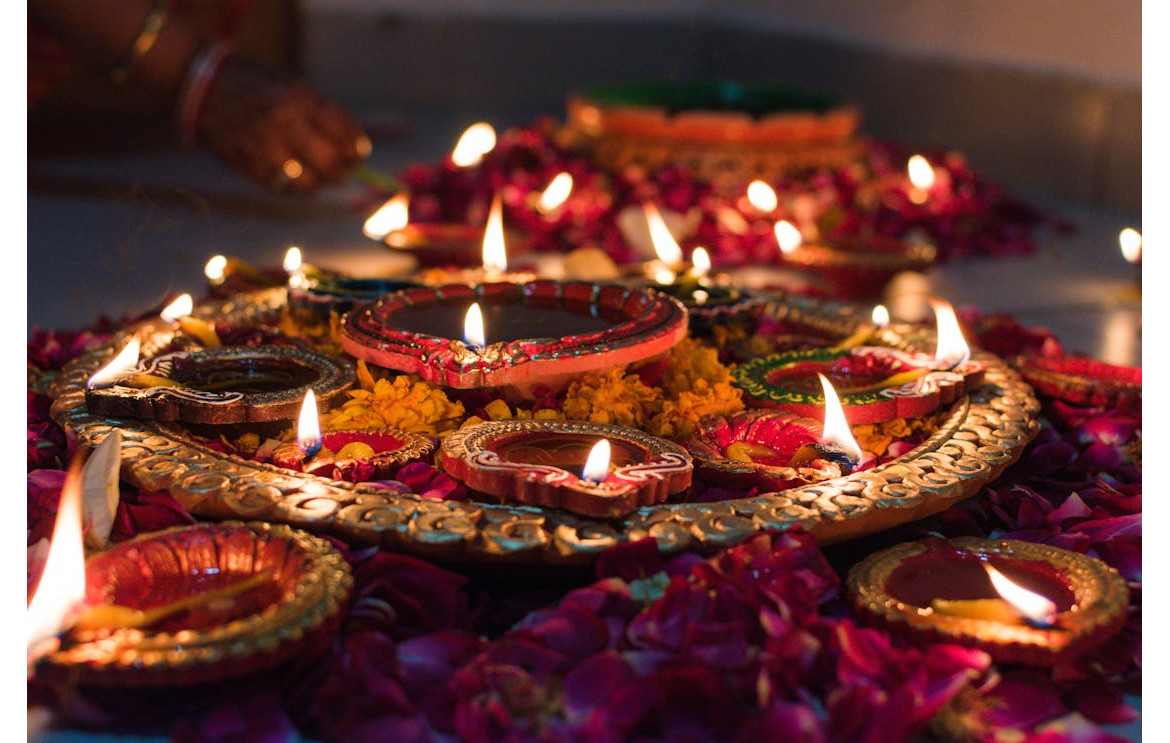
Top Mangala Snanam Decoration Ideas to Make Your Wedding Ceremony Special
13/01/2025 | Kiawa India
Mangala Snanam, a traditional South Indian pre-wedding ritual, is a sacred ceremony that symbolizes purification and blessings for the bride and groom. This auspicious event is typically held on the morning of the wedding day and involves the application of turmeric paste, holy water, and oils to prepare the couple for their new journey.Decorations play a vital role in enhancing the beauty and sanctity of this ritual. Whether you prefer a traditional setup with intricate floral arrangements or a modern twist with vibrant colors and lights, the right decor can set the perfect tone for this special occasion. In this article, we’ll explore top Mangala Snanam decoration ideas to inspire your wedding celebrations.
Top Mangala Snanam Decoration Ideas for Wedding
1. Traditional Floral Backdrop
A floral backdrop is an indispensable element of Mangala Snanam decor. Using fresh flowers like marigolds, jasmine, and roses creates a vibrant and sacred ambiance. Adding banana leaves or palm fronds enhances the traditional aesthetic. Sticking to a color palette, such as yellow and orange, ensures a cohesive and visually appealing setup. A floral backdrop not only serves as a decorative element but also creates a serene and auspicious environment that complements the sacredness of the ritual.
2. Canopy or Mandap Setup
A beautifully adorned canopy or mandap is the centerpiece of the Mangala Snanam ceremony. Drapes made of silk or cotton can be used to decorate the canopy, along with hanging flower garlands and tassels. Adding elements like brass pots filled with water and flowers elevates the overall setup. The mandap serves as a shaded, intimate space for the ceremony, making it both functional and visually captivating.
3. Rangoli Designs
Rangoli adds a festive and artistic touch to the ceremony. Intricate patterns made with colored powders, flower petals, or rice are ideal for the Mangala Snanam event. Incorporating auspicious symbols like the Om, Swastik, or lotus enhances the cultural significance of the design. Placing diyas or small lamps around the rangoli adds a warm glow, making it a perfect decorative element for this sacred occasion.
4. Banana Leaves and Coconut Decor
Banana leaves and coconuts are symbolic elements in South Indian traditions and are integral to Mangala Snanam decor. These natural elements can be creatively incorporated into the setup by using banana leaves to line walkways or create decorative bundles tied with colorful threads. Coconut shells can be used as decorative bowls filled with flowers or turmeric water, adding an eco-friendly and authentic touch to the decor.
5. Brass and Earthenware Decor
Traditional brass and earthenware items bring a rustic charm to the Mangala Snanam decorations. Brass lamps, clay pots, and decorative trays can be used to hold ceremonial items like turmeric and sandalwood paste. Arranging these items in symmetrical patterns around the ceremony area enhances the traditional aesthetic while maintaining the spiritual vibe of the event.
6. Vibrant Drapes and Fabrics
Drapes and fabrics are versatile elements that can transform any venue. Bright and colorful fabrics like silk or cotton can be used to decorate walls, ceilings, and seating areas. Layering fabrics in contrasting colors creates a dramatic and festive look, while lightweight materials keep the space airy and elegant. Using traditional fabrics ensures a cultural touch that aligns with the significance of the ritual.
7. Hanging Decor Elements
Hanging decor can add depth and charm to your Mangala Snanam setup. From flower garlands and bells to colorful umbrellas and paper lanterns, the options are endless. Combining traditional elements with modern accents like fairy lights creates a stunning visual effect. Securely fastening the decor ensures that it remains intact throughout the ceremony, adding a sense of grandeur to the event.
8. Personalized Signage and Name Boards
Personalized decor adds a unique touch to the Mangala Snanam setup. Welcome boards with the couple’s names or inspirational quotes related to marriage and togetherness can be placed at the entrance. Using chalkboards, wooden signs, or placards decorated with flowers or tassels enhances the aesthetic while making the event feel more intimate and special.
FAQs
1. What is Mangala Snanam?
Mangala Snanam is a South Indian pre-wedding ritual where the bride and groom are bathed with turmeric, oils, and holy water to purify and prepare them for their wedding ceremony.
2. What colors are ideal for Mangala Snanam decorations?
Traditional colors like yellow, orange, red, and green are commonly used as they symbolize purity, prosperity, and auspiciousness.
3. Can I use eco-friendly materials for the decorations?
Yes, eco-friendly materials like banana leaves, fresh flowers, and clay pots can be used for a sustainable and traditional setup.
4. How do I create a budget-friendly Mangala Snanam decor?
DIY elements, locally available flowers, and repurposed household items like sarees and brass utensils can help you create an elegant yet budget-friendly setup.
5. What lighting options work best for Mangala Snanam?
Fairy lights, oil lamps (diyas), and LED candles create a warm and festive ambiance, especially for early morning or evening ceremonies.
Mangala Snanam is a sacred and joyous occasion that deserves thoughtful decorations to enhance its beauty and significance. From traditional floral backdrops and rangoli designs to eco-friendly elements like banana leaves and brass decor, these ideas offer endless inspiration to create a stunning setup. Personalized signage, vibrant drapes, and hanging decor elements further add charm and depth to the event, making it truly memorable.With these top Mangala Snanam decoration ideas, you can celebrate this pre-wedding ritual in style while honoring its cultural and spiritual importance. Let your creativity shine as you craft a beautiful, sacred space for the bride, groom, and all the attendees.
